Patches is a 9-year-old who had a massive problem, one that would likely have killed her eventually.
The small dachshund had a large tumour on the skull.
Approached by a colleague at Cornell University in the U.S., it was decided to try a new technology to remove the tumour. One which involved a Canadian university and a Canadian technology company.
Dr. Michelle Oblak (DVSc) is a veterinary surgical oncologist at the Ontario Veterinary College (OVC) at the University of Guelph, Ontario.
ListenIn this operation a major portion of the dog’s skull, about 70 per cent, was removed and replaced with a titanium cap.
While a similar operation has been performed in Britain, it was not on this scale which is believed to be the first in North America
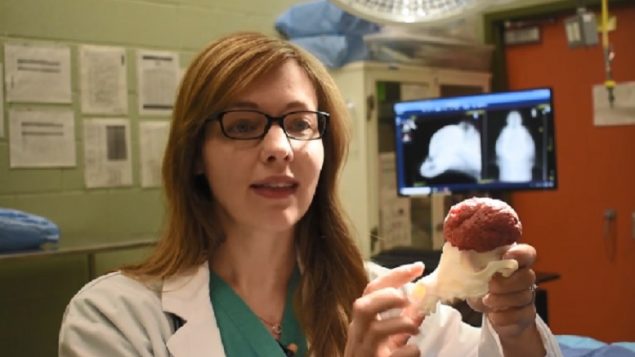
Dr Michelle Oblak (DVSc) veterinary surgical oncologist, Ontario Veterinary College, U Guelph, holds the exactly reproduced 3D model of the dog’s skull and tumour. (U Guelph)
In this case the CT scan of the dog’s head taken at Cornell, was sent to the OVC where through computerised programmes a 3d model was created.
With software programmes and the actual model, Dr Oblak and others were able to accurately map out and practice the surgery before actually performing it. They were also able to send detailed modelling to ADEISS, a medical 3D company in London Ontario. Within about two weeks the company was able to create an exact titanium match of the portion of the skull to be removed.
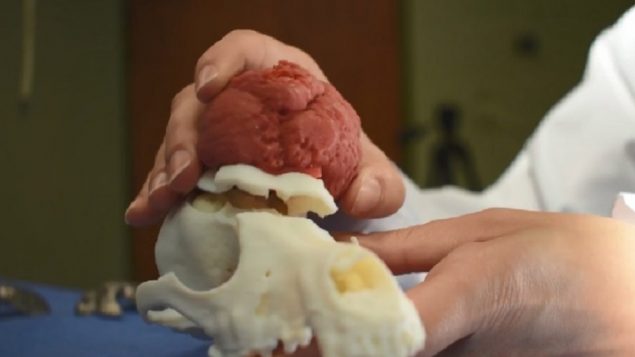
The model allowed Dr Obrak and other surgeons to accurately map the portion to be removed, create a precise cutting guide, and send the data to ADEISS for a precisely fitted titanium cap. ( Dr Oblak-U Guelph)
This enabled the entire operation to be performed in one step with the tumour and 70 per cent of the skull removed, and the titanium replacement fitted perfectly in place with screws.
Normally in such situations, a portion of skull would be removed, a temporary mesh put in place, and then later a permanent piece would be put have to be created, and then placed which required a second operation.
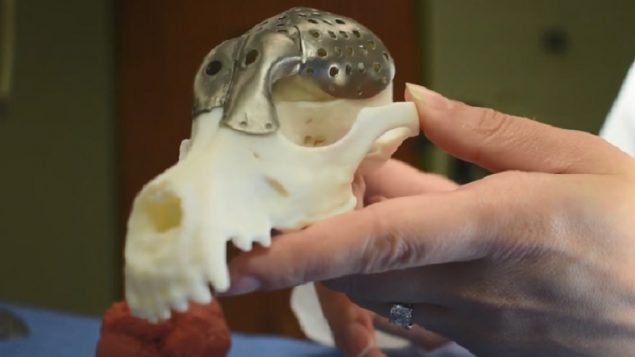
The Canadian company ADEISS was able to precisely reproduce the skull in titanium, including the eye socket. Fully 70 % of the skull had to be removed. ( Dr Oblak- U. Guelph)
In this case after about 2 months of planning, the involvement of software engineers and an industrial engineer the actual operation by Dr Oblak and other surgeons took only four hours.
Patches was able to walk outside for a bathroom visit just 30 minutes after the operation.
The operation was funded through a collaborative industry research grant with Sheridan College and ADEISS.
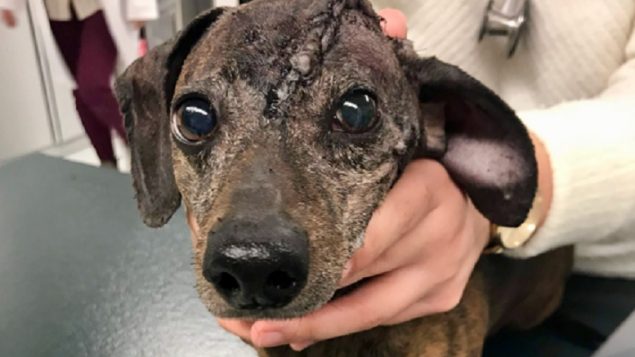
Patches was up and walking shortly after the highly successful operation to remove the skull bone tumour that was beginning to press against her brain inside, and was growing rapidly outside. (Dan Lopez)
Dr. Oblak says such research has wider implications and helps to advance surgical procedures for humans as well as animals.
Patches had an unrelated problem some weeks later with a slipped disc in her spine which has left her back legs paralysed, although her owner says she still is active and pulls herself around with her front legs.
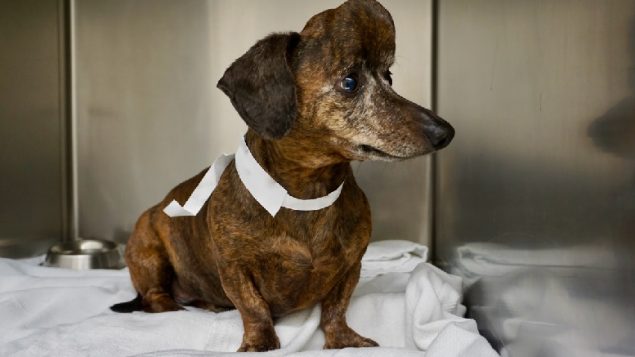






For reasons beyond our control, and for an undetermined period of time, our comment section is now closed. However, our social networks remain open to your contributions.